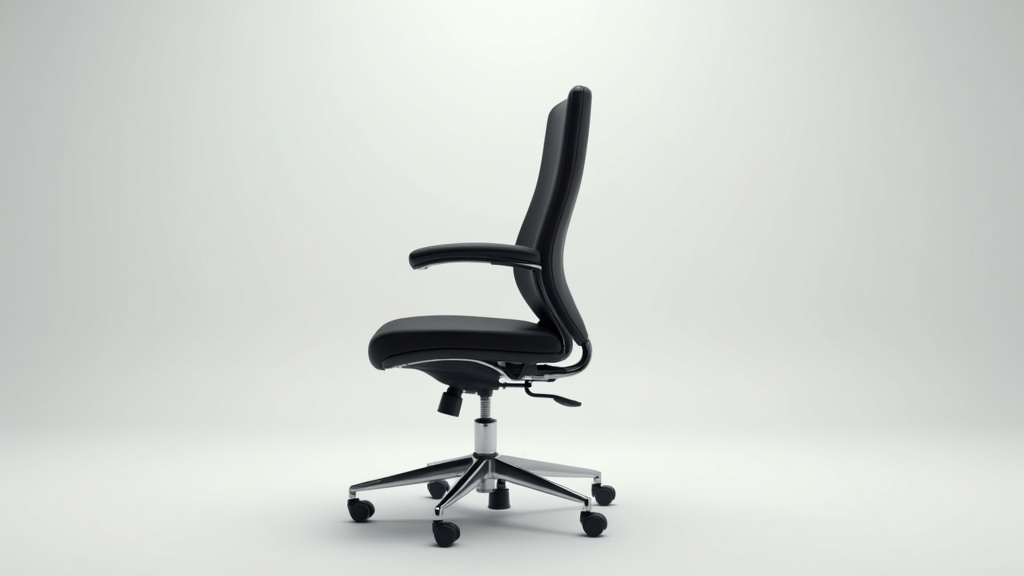Finding an ergonomic chairs for different body types or one that actually fits your body shape can be a total game-changer, whether you’re at your desk all day or dealing with back discomfort. I’ve sat in my share of stiff office chairs that seem made for someone with a totally different frame, and it’s beyond frustrating.
The real magic is understanding how different ergonomic chairs actually work for various body types and needs—including specialized options you may never have heard about.

Why Body Type Matters in Ergonomic Chair Design
Ergonomic chairs are not a one-size-fits-all chair. Height, weight, hip width, and even unique needs like ADHD or chronic pain play a big role in the kind of seating support that makes us comfortable.
When I’m searching for a desk chair, I carefully consider these factors to make sure the chair helps and doesn’t hurt, especially during long hours.
The goal of any ergonomic chair is to keep you supported, safe, and comfortable through your workday. Having a chair that matches your build can reduce those aches in your shoulders, lower back, or hips. Over time, this helps your posture and can even pump up your productivity.
Main Types of Ergonomic Chairs and Who They Work Best For
The world of ergonomic seating is a lot broader than the classic office task chair. Here’s a quick guide to the main styles I’ve tried, and who can benefit the most from each:
- Standard Adjustable Task Chairs: These classic office chairs feature adjustable height, armrests, lumbar support, and tilt. If you’re about average in height and weight, these will often work well—but always check the adjustability before settling.
- Bariatric Desk Chairs: Designed for people who need extra weight capacity and a wider seat, bariatric chairs use heavy-duty materials and often support 400–800 lbs or more. They are a must for those who find normal chairs too tight or fragile.
- Petite Office Chairs: If you’re under about 5’3″, chances are you know the pain of dangling feet and armrests that are way too high. Petite chairs give you a shorter seat depth and lower minimum height so your feet can plant flat and your back gets real support.
- Tall Chairs: These chairs offer longer seat depth, taller backrests, and higher seat range. Tall users get better thigh support and full-back coverage, which stops the slumping that leads to pain.
- Saddle and Kneeling Chairs: These alternative chairs encourage active sitting and promote posture. Saddle chairs keep your hips open, while kneeling chairs switch up your support points. If you love to move around, these make a great addition.
- Chairs For Neurodiverse Needs (like ADHD Chairs): Known as “wiggle chairs” or “active chairs,” these are built for movement even while sitting. This subtle motion helps people with ADHD focus easier. Kore Wobble Chairs and Stability Ball chairs are popular.
 What Is an ADHD Chair and What Is It Called?
What Is an ADHD Chair and What Is It Called?
People often say “ADHD chair” when talking about chairs that boost focus for those with attention differences by allowing subtle body movement. You’ll also hear them called “wiggle chairs,” “wobble stools,” “active sitting chairs,” “sensory chairs,” or “fidget chairs.” Popular picks include the Kore Wobble Chair, the Vari Active Seat, and balance ball chairs.
These seats give an easy, quiet way to burn extra energy. They’re not just for kids; plenty of adults use them for meetings or long stretches at the computer. A bit of movement helps you focus and can knock down restlessness without distracting you.
How to Choose the Right Ergonomic Chair for Your Body
Figuring out the best chair for your body means asking yourself some specific questions. I always look for:
- Seat Height: Do your feet rest comfortably on the floor or a footrest, with knees at a right angle?
- Seat Depth: Is there two to four fingers of space between your knees and the seat edge?
- Seat Width: Is it wide enough but not so wide that you can’t use the armrests properly?
- Back Support: Does the backrest curve fit your lumbar curve, or is it adjustable?
- Weight Capacity: Match the chair’s strength to your needs. Bariatric chairs are best if you want extra room and toughness.
- Armrests: Look for up, down, and sideways adjustability to fit your arm length and tasks.
- Material and Cushioning: Mesh is cool and breathable, fabric is usually softer, and leather has a luxury feel but gets hot. I lean toward mesh or breathable fabrics for all-day sitting.
- Unique Needs: Maybe you need a headrest, want a wobble feature, like extra thigh support, or a petite option—think about your own habits here.
Before buying, test the adjustability as much as possible and check return policies, because a chair that looks great on the website may not work for you in person. I also dig into reviews from folks with a similar build—it can be a lifesaver.
Common Chair Struggles by Body Type—And How To Beat Them
- If you’re tall: Pick a chair with an extended-height gas lift, a high back, and at least 20 inches of seat depth. Adjustable armrests that actually go high can prevent shoulder pain. “Big & Tall” models are made for you, but confirm the seat is both wide and deep.
- If you’re shorter: Look for a seat that can drop below 16 inches in height. A shorter seat with lumbar support keeps you upright. If your feet dangle, a footrest does the trick.
- If you’re plus-size or want more width: Bariatric office chairs offer more space, tough construction, and usually above 400 lbs capacity. Seek out reinforced wheels and thick cushions for lasting comfort. The price is higher, but support and safety are worth it.
- If you’re looking for movement or have ADHD: Wobble chairs or stools promote gentle movement, which can boost alertness and tone down fidgeting. These work with standing desks too. Mixing up a classic task chair and active chair throughout the day works wonders for comfort.
Bariatric Desk Chair: What Is It?

A bariatric desk chair is simply an extra-solid office chair built for higher weight (typically 400 to 800 lbs or more). They’re constructed with reinforced frames, broad seats, and chunkier wheels.
They aren’t just for those needing weight support—lots of folks like them for the added space and long-lasting build quality. These chairs help end the “creaky chair” anxiety and make work hours way less stressful on your body.
Smart Extras and Features to Check Out
- Adjustable Lumbar Support: Lets you move the support to really match your spine’s curve.
- Synchro-Tilt: The back and seat move as a team during reclining, making it comfier on your back.
- Seat Slider: Lets you tweak the seat depth for perfect knee-to-seat fit.
- Headrest: Tall folks and those who like to lean back will love a solid headrest for their necks.
- Wheels and Base: Bigger casters are great for thick carpets and heavier chairs, and if you have wood floors, go for rubberized wheels to keep your home looking fresh.
When I did my last chair shop, these details seriously made the difference over a long week. Each little extra adjustment really adds up by Friday.
Real-World Examples: Making the Chair Fit
I once upgraded to a plush “executive” chair loaded with features, but the seat was so deep that my feet couldn’t touch the floor, my back hurt, and I tossed it within months.
Meanwhile, a coworker who’s over six feet tall sat in a petite model and said it felt like they were squished into a grade-school desk—obviously not the right fit. The right chair is always the one that’s matched to your authentic measurements, not just big promises.
- For creative setups: Try combining seats—maybe a wobble chair for brainstorming breaks, then a classic ergonomic chair for typing.
- For home offices: Mix it up with a regular task chair and a standing desk. Giving your body options throughout your workday is a smart move.
Frequently Asked Questions
What is the ADHD chair called?
The main names you’ll see are “wiggle chair,” “wobble chair,” or “active sitting chair.” Some favorites: Kore Wobble Chair, Vari Active Seat, and ball chairs (sometimes called stability ball chairs).
How to pick the right ergonomic chair?
Look for features you can adjust to fit your unique height, weight, and comfort requirements. Measure your seat height, check depth and width, and choose lumbar support you can move. Test in person if possible—or make sure returns are easy if you buy online.
What is an ADHD chair?
This is a seat—think wobble chair or active stool—that lets you keep moving gently while sitting. It gives your body movement, which can make focusing easier and ease the fidget urge. These aren’t just for children; adults get the same benefits too.
What is a bariatric desk chair?
This is a tough, wide, heavy-duty office chair designed to handle higher weight than standard models—most often in the 400 to 800 lb range. Stronger frames, extra-wide seats, and rugged wheels keep them durable and dependable.
Desk Chair Shopping: Smart Moves for Every Body
Your ideal chair is the one that truly fits your physical build as well as your work habits. Focus on real adjustability, rugged construction, good user reviews, and add-on features (like extra room or active movement) to meet your specific needs.
When you trust your actual comfort, you’ll find less stiffness, more energy, and improved focus as a sweet bonus. Time to roll—pick out your perfect chair and give your body a real chance to feel good at work.
Thanks for stopping by!
Have a great day!




